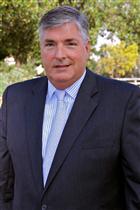
Greetings—
This Easter weekend, there are many opportunities to reflect on the possibilities of redemption, rebirth and connecting to a new(er) life. We celebrate these opportunities in our places of worship, we look for them in our families and we can even breathe them in through the landscape around us. Spring arrives with all its promise.
Taking note of the possibilities for change is nothing new in the world of CBOs. In the normal course of business programs grow and shrink, services evolve and contract and organizations adjust to the changing world. For those who have been engaged in this work for the last decade, it has been a volatile time, with gut wrenching changes arriving, often with increasing frequency. Sometimes it feels like Lent, and other times like the season’s rebirth with flowers, candies and chocolate eggs.
Especially dark chocolate eggs, which are rumored to be healthy.
Easter Flowers Link Generations
One of my favorite Easter traditions was decorating our church. We brought flowers from our gardens (my mother’s, my aunt’s, and ours) to arrange in the sanctuary and the narthex, continuing a tradition started by my grandmother as a silent memorial to her son, who was killed in the South Pacific in World War II. Every year was an adventure, depending on what was in bloom, but there were always long standing stalwarts: calla lilies, irises, watsonias, plum blossoms and chrysanthemums.
The floral displays were augmented by a huge number of white lilies, each a tribute to a loved one. They were often a remembrance of a family member or friend, or in honor of someone special. The names of those remembered were listed in the bulletin. When my aunt passed away several years ago—the last of her generation—there was no one left alive who knew her brother James Laurence Fowler in person, but through a beautiful bouquet his life was remembered.
Most years, our family’s floral display was augmented by a special bouquet delivered as a memorial that my mother would arrange in front of the communion table. That way, she reminded us, it would be seen by those for whom it meant something special. It was how the congregation honored those who were missed.
The Past Can Connect to Our Better Angels
Rituals and connections ground us, sometimes in family, and sometimes in who we used to be. All of us have mementos of places that we love, which hold special meaning, or resonate with a time or purpose. We see these items and remember experiences and opportunities that have shaped our lives, opened doors and helped us become who we are. Sometimes they are a visible memorial tied to place, like the wonderful butterfly wall in the offices at Hinds Hospice. Sometimes they are in something more tangible—a scholarship fund, a dedicated building or a contribution to a cause that mattered. These can also connect us to, in Lincoln’s immortal phrase, the better angels, and remind us of the possibilities of renewal so resonant this season.
Legacies shape our work
At the Community Foundation we too recognize the impact of those who have gone before us. Stewarding legacies is an important part of our mission. River restoration (Ted Martin Fund), college readiness in Dinuba (Dorothy Mitsuoka Fund) and the Lyles Foundation’s support of engineering students are all wonderful examples of the power of generosity over time. Our donors show us how we can touch the future and remember the past.
Building Community Creates Community
We are greatly privileged to work with so many who see community philanthropy as a way to work together. By collaborating to leverage the resources we each bring to the table, and shaping strategies that make these efforts more strategic, we sustain our belief in the possibilities. The work of building community can be daunting and frustrating, but one of its greatest attractions is that it is rarely lonely.
There are many ways we can harness this power of possibility. We can explore the ways that this place can be better and we can honor those who helped shape what we have become. There is more power in those Easter flowers than you think. It is time to get to work. Come join us.

Comments